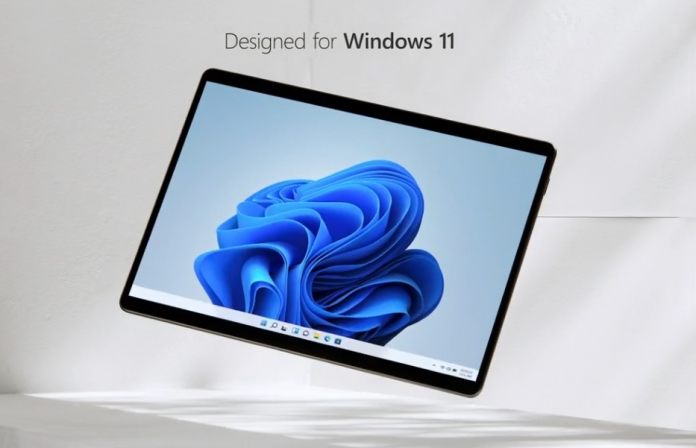Also as expected, the Surface Pro 8 represents a major shift in the Surface Pro range. It is the biggest overall of the product since the Surface Pro 3 that launched 7 years ago. Aside from some significant new specs, the first major change is the design. Microsoft has borrowed heavily from the design of the Surface Pro X. That means a significantly larger screen to size ratio. Thanks to think bezels, the screen feels larger and design looks more elegant. Aside from being a more bezel-friendly screen, the display also comes with plenty of upgrades over the previous model. It has a 120Hz refresh rate for a cleaner 13-inch PixelSense experience. Microsoft has also integrated Dolby Vision into the screen.
Specs
As we already knew, the Surface Pro 8 has 11th generation Intel processors, which can be coupled with up to 32GB of RAM. In recent weeks, we have been reporting on Microsoft preparing to embrace Thunderbolt connectivity for the first time. At the Surface event today, Microsoft did announce a Thunderbolt 4 port for the Pro 8. One of the big talking points about the Surface Pro 8 is its inking capabilities through the Surface Slim Pen 2. The new digital pen fits into the Surface Type Cover and when it is removed, the Surface Pro 8 opens a special inking bar to allow quick access to pen features. Microsoft has built in a vibration motor into the Slim Pen 2. This means users get real haptic feedback that mimics the feel of using a real pen or pencil on paper. Thanks to the improved display, inking on the Pro 8 is more responsive and accurate than ever before. Core Surface Pro 8 Specs
Configuration RAM up to 32GB Thunderbolt 4 support Intel Evo-based quad-core processors Surface Slim Pen 2 13-inch PixelSense Dolby Vision display with 120Hz refresh rate Dolby Atmos audio Microsoft GL processor for better inking New Surface Type Cover with Surface Slim Pen 2 storage
Microsoft’s new Surface Pro 8 will be available from October 5, the same day Windows 11 will launch. Tip of the day: By default computer names in Windows 10 tend to be quite plain. By default, they tend to be ‘WIN’ or ‘Desktop’, followed by a string of random letters and numbers. We show you how to change your PC name with Settings, Command Prompt or PowerShell to make it more easily identifiable.




